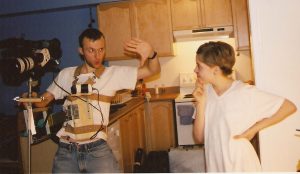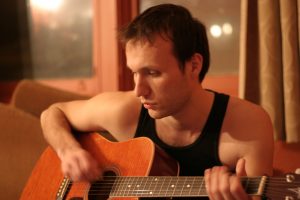I wanted to write this post because I know a lot of you are probably in the same place as me. No work and stuck at home!

Normally I am on the road traveling for work or for fun. This time however not only did all my projects for the next 2 months get cancelled but everything else after that is postponed. Normally I would use this time to stay creative by going out and shooting a short film or doing camera tests. This keeps me busy but also out of the house. I love to travel. Unfortunately with the corona virus going around like crazy we are all stuck home.

I am actually happy to hear that people are using common sense and staying home to try to limit the spread of this virus. Hope you guys are not sick but also that you are prepared financially for the next few months. There is never a need to panic, since panic doesn’t solve anything. It is always a good time to be prepared however. Definitely once this passes I hope those of you who never saved money or essentials at home for times like these will consider doing that from now on. Doesn’t matter if it’s bad economy or natural disasters or wars, things can always happen that can affect everyone in a negative way. So it sure is a good plan to be prepared for such moments without panicking.
Now what happens once you prepared and are now stuck at home? I hear many people complain that they are bored. I get it, I love to get out even if it’s just to a local restaurant or park as much as anyone. In this case however the best way to pass the time is to create. For us artists this shouldn’t be too hard. Even if you can’t go outside you can be creative by making things inside with what you have. You can write a script. Maybe edit something new or re-edit an old video you were never happy with. Come up with some fun visual and physical effects. Also if you have a lot of free time on your hands why not spend some of that time investing in yourself by learning new skills. Any skills that you think might be useful to you. It doesn’t even have to be related to your work.

I myself am keeping busy right now doing post production work on a film that I wrote, shot and directed but I am also learning a new way of gardening. Yup you heard it right, gardening! I always loved to create, build and make things with my hands. When I was 12 years old I built a working 16mm film projector out of cardboard and my dad’s plumbing supplies. 20 years ago I build a sailboat simply because I wanted to learn how sailboats work. I still have it by the way although I haven’t sailed it in years.




I’ve build things around the house like sheds, decks, etc. I even built movie sets for projects I worked on. Back in the day when I couldn’t afford to buy all the nice camera accessories, I used to build my own gear. I built my own dolly, crane and even a steadicam.

I simply love creating things. So I am never bored. I always liked doing gardening, which probably came out of my mom’s interest and profession as a gardener. This year I am starting to build a new hydroponics garden which allows a faster way to grow food without soil. We’ll see how that comes out or doesn’t, hahaha!

Among my many interests and hobbies I like playing the guitar and although I’m not great at it, one day I decided to learn at least the basics. Took me 2 months before I could finally play a whole song. Same with my interest in aviation. Since I was a kid I loved to read books about airplanes or watch movies about it, even though I lived in communist Poland and didn’t think I would ever get a chance to fly in one. Luckily my family was able to get out of the country and once I was old enough and had the money, I put aside free time so I could take flying lessons for a personal pilot’s license.

I always loved airplanes and it’s probably one of the reasons why in 2002 I directed my first feature film about a WW2 pilot that crash lands in Nazi occupied France.


I actually hand build most of the props and sets for this film since it was a fairly low budget production and most of the money went to the cost of the film stock and it’s developing. You can watch the full film here on Amazon Prime.
A year before that I fell in love with doing small, self financed films. In 2001 I wrote and directed two short films which were done specifically around things I could find in my house. The first film was called “The Assistants” and in my basement I made a simple set where a crazy doctor builds a Frankenstein like monster. The film cost me zero money since I used whatever I already had as props. My actors were my friends and family. 3 months later I shot a 40 minute long film titled “The Screwdriver Plan”. The idea for this film started all because of a large and unusual screwdriver I found in my dad’s toolbox. I ended up writing a story about it and produced the film with my brother.


Whatever your interests might be at any particular moment, if you follow your creative passion you will never be bored no matter where you are. If you don’t know how to do something but you are interested in that particular topic then read about it or if you can, learn by trying it out yourself. Take time and learn a new skill, even if you don’t think you will ever use it. It’s never a bad idea to learn something new and find out about that particular industry, hobby or skill by trying it hands on.
One of the reasons why I have my website and why I share so many tutorials and behind the scenes moments from my work is because I realize how beneficial it is to people who are considering becoming a filmmaker. When I was starting out I learned best by doing but I also used to watch all the DVD behind the scenes in order to find little bits of information on how a particular shot was done. Of course that was hard to do because each DVD cost a lot of money for a kid who was working part time as a dishwasher. Not to mention some DVD’s I would buy had boring “behind the scenes” which was mostly actors saying wonderful things about each other which some very quick cuts of them having fun on the set of the film. I would still pause the video and go frame by frame so I could figure out by looking at the behind the scenes shots, how the lights or camera was setup to get the final effect. Once I started to work in the film industry and the internet made it easy to share online my experience, I enjoyed answering people’s questions about my work and helping them get similar results.
Since we are all stuck at home right now, please take the time to invest in yourself by learning something new. Try to create something or even share your experience with others if you think they might benefit from your mistakes and successes.
I of course post most of my tutorials, camera tests and reviews for free on my website so anyone interested can benefit. On top of that I am giving right now a 50% discount on all of the products in my online store. This way if you ever wanted to try out some of my long and in-depth tutorials but couldn’t afford them, then hopefully this will make it easier. Just head on over to my store and use the coupon code stayhome


Great post!
Thanks Pamela!
Appreciated… much love Tom.
Thank you Steven!
Hey Tom: enjoyed your post and loved your short film. The boat you built was pretty cool. I noticed the unfinished buildings in the background. Know I know where the rest of the wood went……it on the water.
How difficult is it to work with actual film and not something digital. I suppose the results are more authentic than digital?
Very difficult. You need a team that checks the gate of the camera after each take because sometimes dust or hair can get stuck in the film gate and that means you will have that shot ruined. Also you have to be careful with the film not to scratch it or expose it to light when handling it on set or when you send it in to get it developed at the end of each day. It’s expensive, heavy and big 400 foot roll of film will only give you 10 minutes of recording time. So you have to change the film magazine often. Not to mention that you can’t see what you recorded until the end of the day when you get the negative developed and then converted to video dailies. That is if you can afford to do that. On most low budget films we wouldn’t even have the actual negative developed until we were finished shooting the whole project. Which often meant that sometimes we thought we got a good take but in fact it wasn’t in focus or badly exposed etc. Film can look nice if you have the time and money to work with it properly. Otherwise digital is always he better route to go.